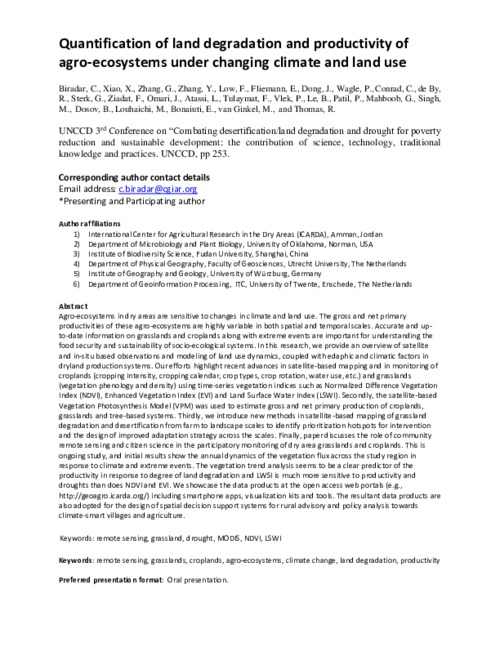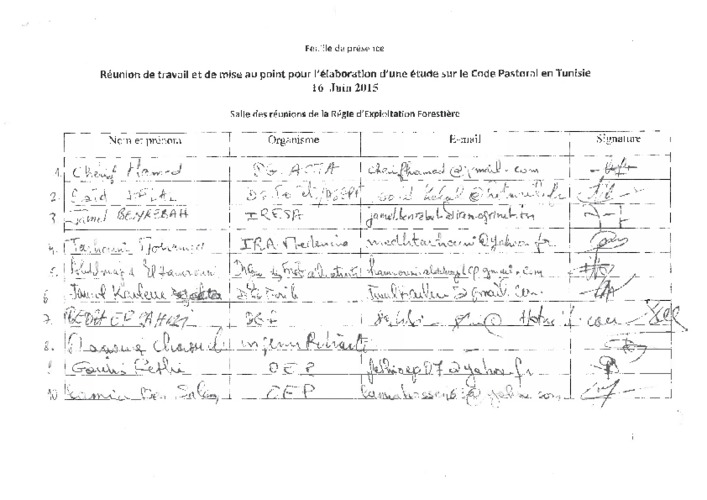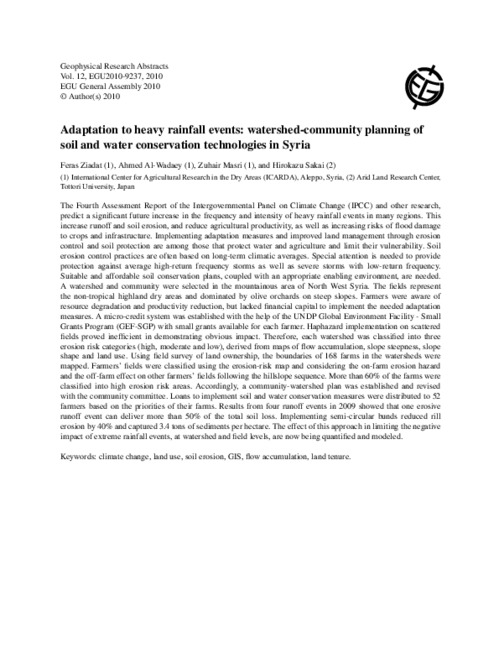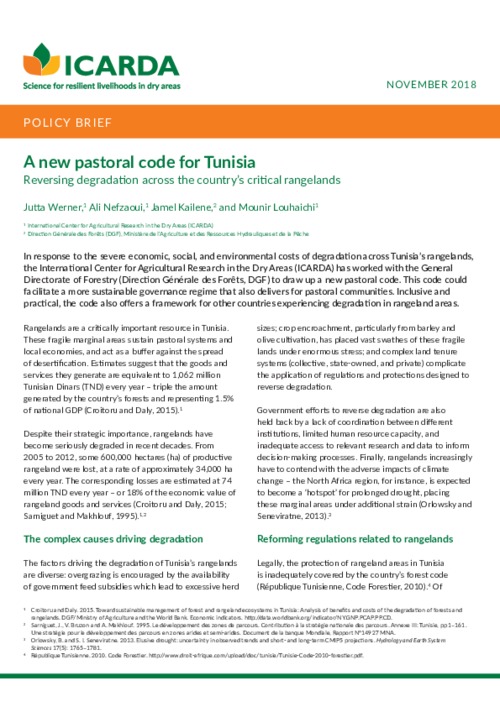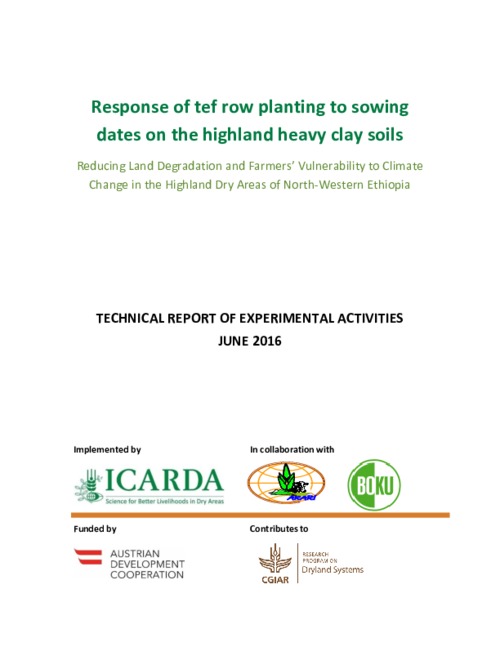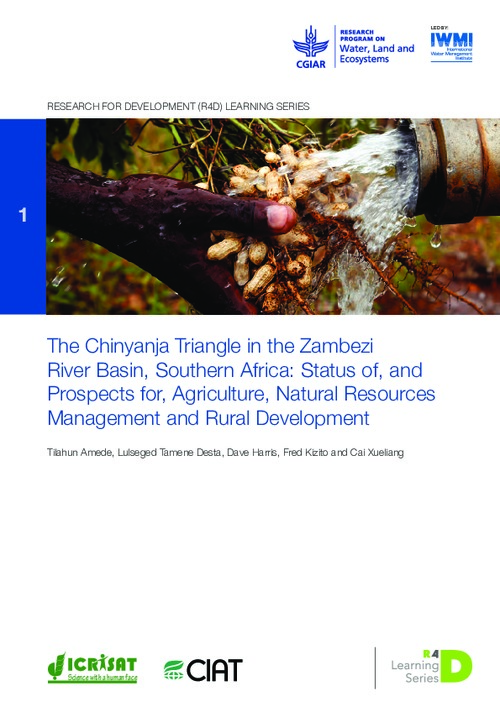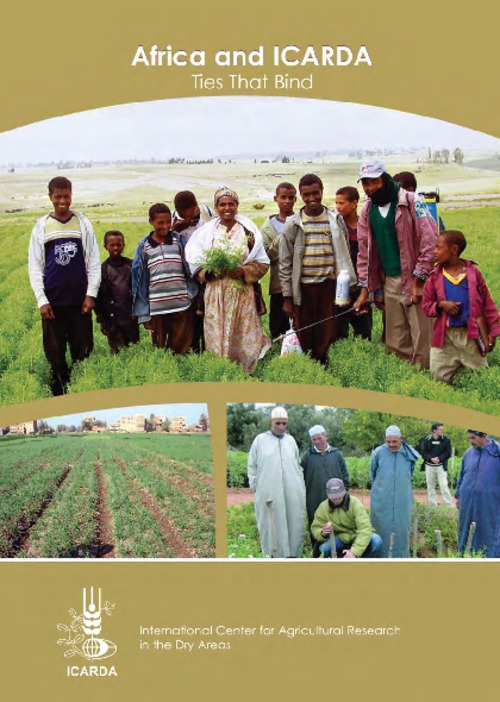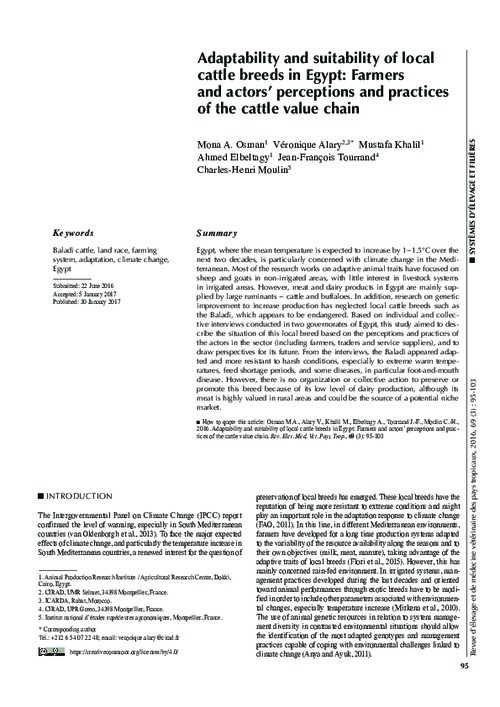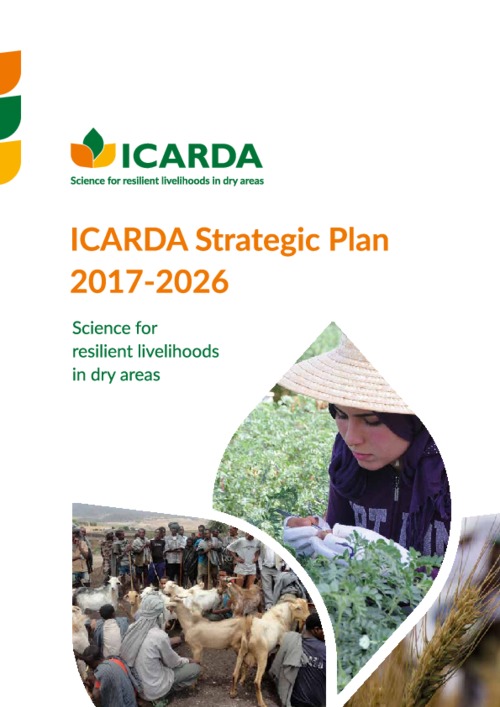Quantification of Land Degradation and Productivity of Agro-Ecosystems under Changing Climate and Land Use
Agro-ecosystems in dry areas are sensitive to changes in climate and land use. The productivities of these agro-ecosystems are highly variable in both spatial and temporal scales. Accurate and up-to-date information on these production systems at farmscape to landscape scales are important for understanding the food security

